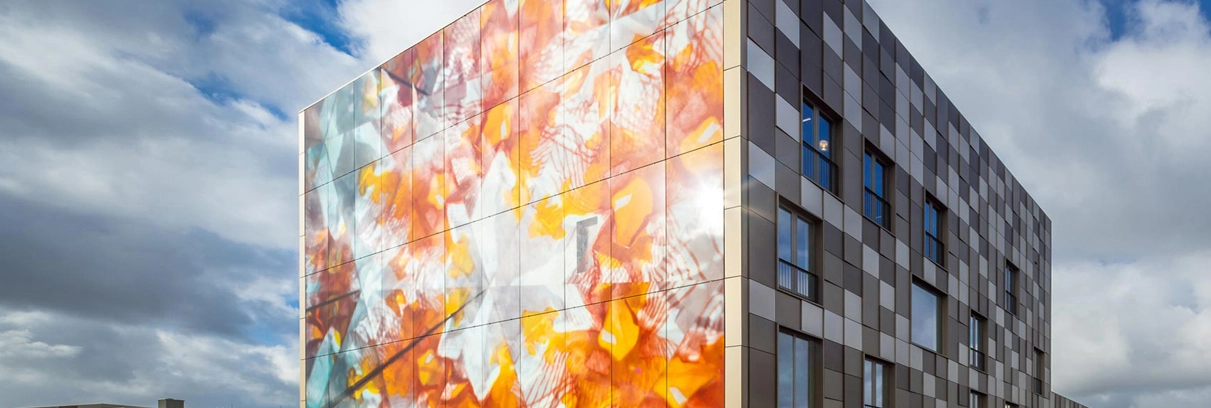Printing glass is a type of glass that has been decorated with a printed design. The design can be printed on the surface of the glass, or it can be printed between two panes of glass.
There are a variety of ways to print on glass. One common method is to use a screen printing process. In screen printing, a design is created on a screen, and then ink is forced through the screen onto the glass.

Aesthetic Flexibility
Customization: Printing on glass allows for a high degree of customization. Any design, from intricate patterns to high-resolution photographs, can be printed, offering unique possibilities for personalization.
Color and Design Variety: A wide range of colors and designs can be achieved, enabling architects and designers to realize their vision without the limitations of traditional glass coloring methods.
Enhanced Durability and Maintenance
Scratch and Fade Resistance: Modern glass printing techniques, such as digital ceramic printing, fuse the ink with the glass surface, making the designs resistant to scratching, fading, and weathering.
Easy to Clean: Printed glass surfaces are smooth and non-porous, making them easy to clean and maintain, unlike other decorative surfaces that may require special care.
Environmental Advantages
Energy Efficiency: By optimizing light transmission and incorporating solar control designs, printed glass can contribute to a building’s energy efficiency, reducing the need for artificial lighting and climate control.
Sustainability: Glass is a sustainable material, and the inks used in glass printing are often environmentally friendly, contributing to greener building practices.
Technological Integration
Glass printing technology can be integrated with other innovations, such as embedded LED lighting or interactive displays, opening up new possibilities for dynamic and functional design elements.
Printing on glass has revolutionized the way architects and designers approach the aesthetic and functional aspects of buildings and interior spaces. This innovative technique allows for the application of intricate designs, vibrant colors, and detailed images directly onto glass surfaces, offering a unique blend of artistry and utility. The role of printing glass in enhancing visual appeal is significant and multifaceted, encompassing various aspects of design and decoration.
Printing on glass enables unparalleled customization, allowing designers to create unique, site-specific works of art. Whether it’s a large-scale architectural facade or a small decorative panel, the ability to print any design onto glass means that every project can reflect a specific theme, branding, or personal taste. This level of personalization is particularly appealing in spaces that aim to stand out or convey a specific message.
Printed glass is not just an add-on feature but can be seamlessly integrated into the architectural design of buildings. It can be used in exterior applications, such as curtain walls and facades, to create striking visual statements that capture attention and define the building’s identity. Similarly, in interiors, printed glass can be used in partitions, balustrades, and feature walls to enhance the overall design narrative of the space.
Pls contact us if you have any inquire or questions, thank you.
No.12111, JINGSHI ROAD, LIXIA DIST, JINAN CITY, SHANDONG PROVINCE, CHINA